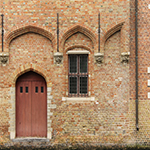Euroacademia Conferences
 Europe Inside-Out: Europe and Europeanness Exposed to Plural Observers (9th Edition) April 24 - 25, 2020
Europe Inside-Out: Europe and Europeanness Exposed to Plural Observers (9th Edition) April 24 - 25, 2020 Identities and Identifications: Politicized Uses of Collective Identities (9th Edition) June 12 - 13, 2020
Identities and Identifications: Politicized Uses of Collective Identities (9th Edition) June 12 - 13, 2020 8th Forum of Critical Studies: Asking Big Questions Again January 24 - 25, 2020
8th Forum of Critical Studies: Asking Big Questions Again January 24 - 25, 2020 Re-Inventing Eastern Europe (7th Edition) December 13 - 14, 2019
Re-Inventing Eastern Europe (7th Edition) December 13 - 14, 2019 The European Union and the Politicization of Europe (8th Edition) October 25 - 26, 2019
The European Union and the Politicization of Europe (8th Edition) October 25 - 26, 2019 Identities and Identifications: Politicized Uses of Collective Identities (8th Edition) June 28 - 29, 2019
Identities and Identifications: Politicized Uses of Collective Identities (8th Edition) June 28 - 29, 2019 The European Union and the Politicization of Europe (7th Edition) January 25 - 26, 2019
The European Union and the Politicization of Europe (7th Edition) January 25 - 26, 2019 7th Forum of Critical Studies: Asking Big Questions Again November 23 - 24, 2018
7th Forum of Critical Studies: Asking Big Questions Again November 23 - 24, 2018 Europe Inside-Out: Europe and Europeanness Exposed to Plural Observers (8th Edition) September 28 - 30, 2018
Europe Inside-Out: Europe and Europeanness Exposed to Plural Observers (8th Edition) September 28 - 30, 2018 Identities and Identifications: Politicized Uses of Collective Identities (7th Edition) June 14 - 15, 2018
Identities and Identifications: Politicized Uses of Collective Identities (7th Edition) June 14 - 15, 2018
Public Place and the Challenges of Multiple Transformation
-
-

-
Presentation speakers
- Shiva Shadravan, Technical University of Berlin, Germany
Abstract:
Urban history cannot be explained without reflecting on the inertia that exists in city transformation and city transformation is the knowledge of changing form of cities. (Bosselmann, 2008) Transformation implies changes over time; the present urban fabric is resultant of successive generations of settlers who left their mark in physical structure as well as political, economic and social institutions. (Soma A. Mishra and R. K. Pandit, 2013) The city of Shiraz in Iran, with its long and unique history, has been the subject of numerous studies. The selected case of the research – Karim Khan Zand Street – in Shiraz has specific national historic prominent features to highlight importance of this street as an onlooker of the history and events. As we walk through this street, we walk through time, encountering the city-building legacy of past generations. Each zone of the street had specific historic built environment characteristics and also was the place of gatherings, social and cultural events in different sequences of time before the 1979 revolution of Iran. After the 1979 revolution, the street has been influenced by massive institutional reforms according to post revolutionary policies and believes and thus, the most appealing and vital aspects of the street transformed regarding various institutional, social and urban change. This place can be conceived as a spot of concentrated history that renders visible the roots of the city and offers the individual the opportunity to experience the accumulated history as well as presenting and embracing the individual and collective perceptions of history and identity. This paper develops a conceptual structure to interpret the process of urban and street changes by focusing on post revolutionary multiple urban transformations and the expressions and interactions to public activities represented on people?s daily life.
-
Related Presentations

The Artist as Cultural Producer: A Call to Thinking
- Gale Richardson

















